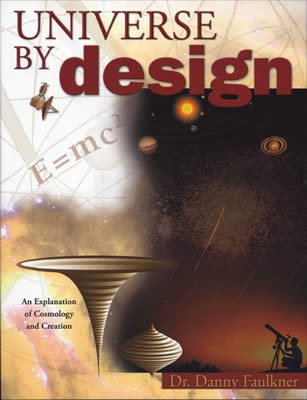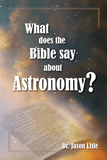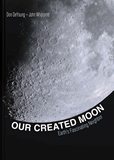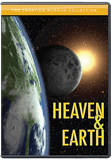
Answers to Chapter Questions
Answers to the questions at the end of each chapter of the book Universe by Design.
Introduction
- Cosmology is the study of the structure of the universe. Cosmogony is the study of the history of the universe.
- The ancients used several proofs to show that the earth was spherical. One proof was the fact that the earth’s shadow during a lunar eclipse is always round. Another proof is that the position of the visible stars changed as one traveled northward or southward.
- Eratosthenes measured the size of the earth 22 centuries ago. He did this by measuring the different angles of the sun at noon on the same date at different latitudes.
- The geocentric model is the theory that the earth is the center of the universe with the sun and other planets orbiting the earth.
- Copernicus published a book that argued for the heliocentric theory. In his book, he found the orbital periods of the planets and determined the relative sizes of the planets.
- The Tychonic model was a compromise cosmology, where the other planets orbited the sun, but the sun in turn orbited the earth each year.
- Galileo saw that the moon was imperfect in that it had mountains and craters. He saw spots on the sun, which made that body imperfect as well. Galileo saw Venus go through phases, which meant that that body orbited the sun. He saw satellites orbiting Jupiter, objects that the ancients did not know about and obviously orbited something other than the earth. Lastly, Galileo saw many other stars too faint to be seen with the naked eye.
- William Herschel was the first to determine the basic shape of our galaxy in his grindstone model.
- The island universe theory is the idea that our galaxy is just one of many galaxies. The opposite viewpoint was that there are no other galaxies beside our Milky Way galaxy.
Chapter One
- The two pillars of modern physics are quantum mechanics and general relativity.
- In Newtonian physics, gravity acts at a distance through empty space with no known mechanism. In general relativity, gravity is transmitted through space by curving space.
- The first confirmation for general relativity was the bending of starlight around the sun observed in the 1919 total solar eclipse.
- A static universe is a universe that is neither expanding nor contracting.
- The cosmological constant was a repulsive term that Einstein introduced into his cosmology to produce a static universe.
- Homogeneity means that the universe has the same properties everywhere.
- Isotropy means that the universe has the same properties or appearance in every direction.
- The cosmological principle is the assumption that the universe is both homogeneous and isotropic. The cosmological principle usually leads to the big-bang model.
- The perfect cosmological principle is the assumption that the universe is both homogeneous and isotropic at all times. The cosmological principle usually leads to the steady-state, or continuous creation, model.
- The cosmic background radiation (CBR) was predicted by the big-bang model, so the CBR is the best evidence for the big-bang theory. On the other hand, the steady state does not predict the CBR, so most cosmologists think that the CBR disproves the steady-state theory.
- The expansion of the universe and the abundances of the light elements do not constitute proof of the big bang model, because those data were inputs into the big-bang model. That is, these are examples of explanatory power, not predictive power.
- A bound universe is a universe that has an edge or boundary.
Chapter Two
- The flatness problem is the question of why the value of Ω is so close to 1. With time, the value of Ω ought to rapidly depart from 1, so the value of Ω initially had to be extremely close to 1. Only in a universe with Ω near 1 is life possible, so the universe appears contrived. This is called the flatness problem, because a universe with Ω equal to 1, the universe has no curvature.
- The anthropic principle is the principle that the universe appears designed for our existence.
- Inflation is the idea that very early in time the universe rapidly expanded faster than the speed of light. Inflation was devised to explain the flatness problem, but it also attempts to explain other questions, such as why the universe has a homogeneous temperature (the horizon problem).
- Dark matter is invisible mass whose existence is demanded by the gravitational forces that the dark matter apparently exerts. Unlike “normal” matter, dark matter gives off no light.
- The COBE and WMAP missions found slight temperature variations in the CBR. These variations are required by the big-bang model, but the actual temperature variations were below the level initially predicted by the big bang.
- Dark energy is a force causing the expansion of the universe to accelerate, which is opposite to the effect that matter has. Dark energy is very similar to Einstein’s old cosmological constant.
- The Hubble time is the reciprocal of the Hubble constant, and it is the rough age of the universe in the big-bang model.
- Cosmologists have suggested that the universe began as a quantum fluctuation out of nothing or in another, pre-existing universe. Other cosmologists have suggested that the universe is oscillating between big bangs and “big crunches.” Some cosmologists have suggested that the universe is infinite and that it always has expanded from much higher energy states and will continue to do so.
Chapter Three
- The redshifts of galaxies are not the result of the Doppler effect, but are due to Hubble flow, the expansion of space between the galaxies.
- If a galaxy is nearby, and if its local motion due to gravity is toward us and exceeds the galaxy’s feeble Hubble flow, then that galaxy can have a blueshift, rather than a redshift.
- The twin paradox results from a misunderstanding of modern relativity theory. Consider identical twins, with one twin taking a space trip at nearly the speed of light while the other remains on earth. Because of time dilation, one twin ages very little, while the other twin ages a great deal. If all reference frames are equal, then who is to say which twin is actually moving and thus which twin ages very little? The resolution of the twin paradox is the realization that not all reference frames are equal. According to Mach’s principle, the twin on the earth remains most at rest with respect to the total of the mass of the universe, so his frame of reference is preferred over his brother’s. Therefore, the twin aboard the space ship is the one doing the moving.
- Modern relativity theory does not allow for material objects to travel faster than the speed of light, because that would require infinite energy. However, as the universe expands, particles in the universe are usually nearly at rest with respect to space. It is space itself that is expanding faster than the speed of light, not the particles.
- Unless a galaxy’s redshift is very large, that galaxy will not appear redder than normal. Even a high redshift galaxy appears only slightly redder. It is the spectral lines that are shifted, not the overall color.
- The speed of light in a vacuum is about 300,000 km/s. In matter, such as air, glass, or water, the speed of light is always less than what it is in a vacuum. The constancy of the speed of light refers to the fact that whenever we measure the speed of light, its value is always independent of our motion. If we move toward or away from a source of light, the speed that we measure is always 300,000 km/s.
- The name “big-bang” suggests that the universe began as an explosion, and explosions are always random, chaotic events. Actually the big-bang model posits that the universe came into existence in a highly ordered expanding state.
- This is an improper question, because according the big-bang theory, the big bang was the first event in time, so there was no such thing as, “before the big bang.” Furthermore, the question also suggest that space existed before the big bang, but in the big-bang model, space came into existence when the rest of the universe did.
Chapter Four
- Most astronomers think that quasars are very massive black holes at great distances. According to this theory, they produce great luminosity by way of in-falling matter. Quasars may be the cores of distant galaxies.
- Halton Arp has argued that quasar redshifts are not cosmological, so that quasars are actually very close to us. To support his contention, Arp has presented evidence that calls into question how reliable the assumption of cosmological redshifts is.
- Some astronomers think that redshifts of galaxies tend to clump around certain values, such as 72 km/sec. This is difficult to explain in the big-bang model.
- The COBE experiment was designed to measure slight temperature variations in the CBR predicted by the big-bang model. The measured temperature variations were an order of magnitude less than predicted. The big-bang model was recalculated to produce the observed temperature variations.
- No, all observations strongly suggest that the universe is not homogeneous. It is an assumption that at some high level the universe is uniform.
Chapter Five
- Modern cosmological theories require that the universe be homogeneous, but the fact that we appear to be in a very large quasar-free region of space violates this assumption. The steady-state theory cannot explain this.
- Unlike the steady state theory, in the big-bang model the universe and the objects in it are evolving and aging. If the universe is more than 10 billion years old and quasars are galaxies in their infancy, then there shouldn’t be infant galaxies anymore. We would see infant galaxies only at great distances where it has taken their light billions of years to reach us.
- The second law of thermodynamics states that energy becomes less useful with time. If the universe has always existed, as the steady state theory claims, then there would have been more than enough time for the energy in the universe to become totally useless, or at maximum entropy. This is not what we observe.
- Unlike other cosmological models that assume gravity is the dominant force controlling the overall structure of the universe, the plasma model assumes that electromagnetic forces are the primary forces shaping the universe.
Chapter Six
- The day-age theory is the belief that the days of the creation week were long periods of time.
- The framework hypothesis is the belief that since the first few chapters of Genesis contain poetic elements that these passages are poetry and need not be taken as historical narrative.
- Evolution is a purely natural, purely physical explanation of our existence and the existence of the world.
- Some creationists question whether the universe is expanding in an attempt to undermine the big-bang theory. They reason that if the universe is not expanding, then the big bang cannot be true. This is correct, but the big bang is not the only possible cosmological model based upon universal expansion. If we reject universal expansion, it may prevent us from discovering a creation-based cosmology.
- The translators of the Septuagint translated Genesis to reflect the cosmology current in their day—that the heavens consisted of a hard, transparent sphere. In similar fashion, modern Christians who accept the big bang interpret Genesis in terms of the dominant cosmology of our day.
- The universe appears to be billions of light years across. The light-travel-time problem is the question of how light from much of the universe could have reached the earth if the universe is only thousands of years old, as most creationists believe. Creationists have offered several explanations.
- A white hole is a region of space packed with a large amount of matter into a high density so that its gravity is very large. A white hole is very similar to a black hole, except that matter and energy stream out of a white hole and into a black hole.
- Most theorists doubt that white holes exist today because of two reasons. First, there is no known natural explanation of how a white hole could form. Second, white holes are very unstable and thus evaporate very quickly.
Chapter Seven
- There are two reasons why progress in developing a creation model has been so slow. One reason is that there are so few qualified researchers in the field. The other reason is that we have so few biblical specifics about astronomy and creation.
- The word raqiameans something that is beaten out, as one might beat or stretch out a metal into a sheet. Elsewhere, the Bible mentions that God stretched out the heavens. This is very similar to the modern cosmological idea of the expanding universe.
- In the Bible, a star is any luminous star-like object in the sky. By their appearance, modern day aircraft at night would fit this definition.
- Romans 8:22 suggests that all of the universe shared in the curse as a result of man’s sin.
- If we attach the big bang too closely to our understanding of creation in Genesis, then when that theory is discarded, our understanding of Genesis must be discarded as well. In the minds of many, this would discredit the Genesis creation account as well.
Appendix
- The two types of telescopes are the refractor and reflector. A refracting telescope uses a large lens to form the image, while a reflecting telescope uses a large curved mirror to form the image.
- The size of a telescope is determined by the diameter of its objective (the lens or mirror). A larger telescope gathers more light, allowing us to see fainter and more distant objects. A larger telescope also produces better resolution, which means that we see more detail in the image.
- One peculiarity of the magnitude system is that the system runs backward—the greater the number, the fainter the star. The other peculiarity is that the system is logarithmic, which means the differences in brightness are compressed numerically.
- The spectral types are O, B, A, F, G, K, and M. This order corresponds to decreasing temperature.
- The study of a binary star tells us the masses of the stars in the system.
- The only direct method for finding stellar distances is trigonometric parallax. The HIPPARCOS mission allowed us to measure distances out to about 200 pc (600 light years) with this method.
- We can use Cepheid variables to find distances, because Cepheids follow a period-luminosity relation. That is, the brightest Cepheid variables have the longest periods. Therefore, if we measure a Cepheid’s period, we know how bright it is, and so we can compute its distance by comparing its actual brightness to how bright it appears to us.
Universe by Design
This book explores the universe, explaining its origins and discussing the historical development of cosmology from a creationist viewpoint.
Read Online Buy BookRecommended Resources
Support the creation/gospel message by donating or getting involved!

Answers in Genesis is an apologetics ministry, dedicated to helping Christians defend their faith and proclaim the good news of Jesus Christ.
- Customer Service 800.778.3390
- © 2024 Answers in Genesis




